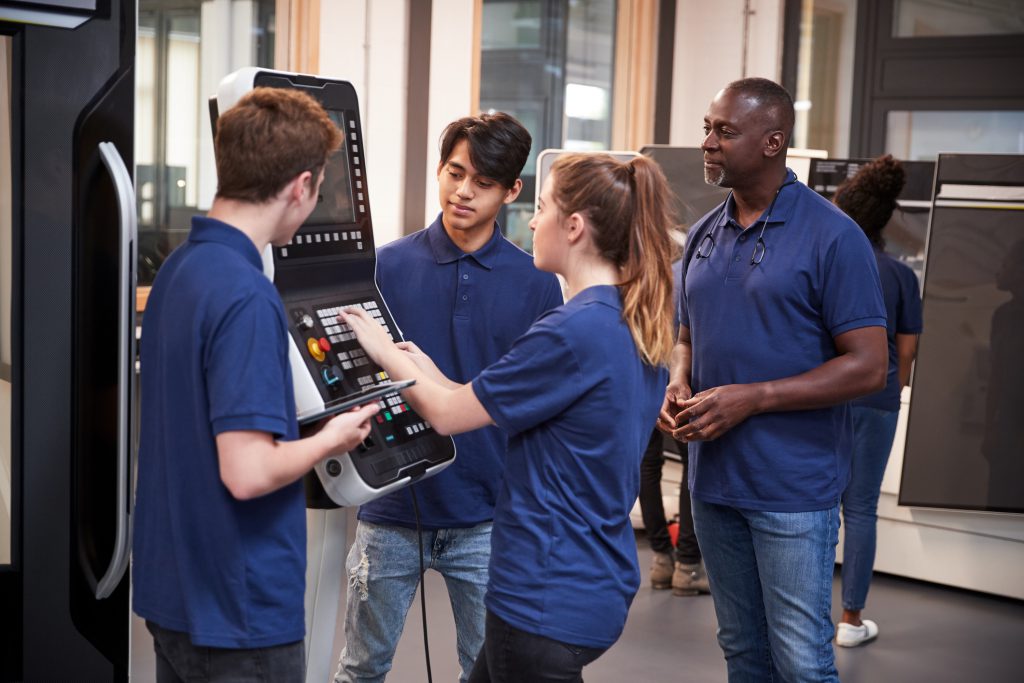
Apprenticeships are often touted as key to preparing the next generation of Americans for work in advanced manufacturing. While employers have hired about 536,000 apprentices since Jan. 1, 2017, it’s clear more can be done to strengthen these programs in the United States and attract more young people to careers in the skilled trades.
Other countries can offer a few lessons.
The House Committee on Education and Labor’s subcommittee on Higher Education and Workforce Investment held a hearing on Tuesday on apprenticeship programs in other countries to see what the United States can learn when trying to improve apprenticeship programs here.
Witnesses included Tim Bradley, the minister counsellor for Industry, Science, and Education at the Australian Embassy to the United States; Dr. Silvia Annen, a senior researcher at the Federal Institute for Vocational Education and Training in Bonn, Germany; and Dr. Simon Marti, who the head of office for Swiss Core in Brussels, Belgium. Below are 8 takeaways from apprenticeship programs in Australia, Switzerland, and Germany.
Here are some of the takeaways.
1. Increased Federal Budget

Switzerland spends 1 percent of its GDP on apprenticeships. That’s equivalent to $20 billion, or roughly two times the entire discretionary budget for the Labor Department. If the U.S wants to improve its apprenticeship program, it needs to allocate more money to this cause.
2. More Occupational Routes

In Switzerland, apprentices can choose from roughly 230 different occupations, which cover all sectors of their economy.
3. Dual-System Program

In Germany, apprentices can work on their craft in addition to a 4-year institution, or instead of it. This creates a company and school-based system, leading to the lowest youth unemployment rate in the European Union.
4. Alleviate Living Costs

In Australia, part of the funding goes towards assisting the living costs of apprentices. This would allow them to focus more on their work and ease the stresses of outside burdens.
The U.S.-based National Skills Coalition has advocated for similar assistance, we'll note, including affordable childcare for apprenticeship program participants.
5. Promote Programs in Schools

The Swiss apprenticeship program is an integral part of school life for young Swiss students. Schools promote the programs and allow students to explore their options for their future. Companies will visit schools in a similar vein to college fairs in our country. Moreover, companies offer shadowing programs that allow young Swiss students to see if a potential job is a correct path for them to pursue.
6. Divide the Cost Between the Public and Private Sectors

In Switzerland, the apprentice program is funded by three different entities: 60 percent is funded by employers, 30 percent is funded by cantons (states), and 10 percent is funded by the federal government. This allows for money to be spent efficiently and does not rely on the government as intensely.
7. Summon the Council

In Australia, a federal council determines the standards and goals of the program with input from the businesses, setting up what the training baselines should be. This allows for both federal oversight and employer input on the apprenticeship program.
8. Employer Benefits

The big takeaway from the systems in Australia, Switzerland, and Germany is that these programs are designed to be a supplement to the needs of employers. Employers provide input to what requirements should look like and are at will to hire as many apprentices as they need. They also are given the ability to set their own standards on top of existing federal minimum standards. This relationship is important so the business community in these countries can look at these programs as a benefit to them and not just an unnecessary burden placed on them by the government in the name of improving social welfare.
This blog post was written by AAM interns Joseph Swindal, Luke Ferguson, and Noah Musto.
